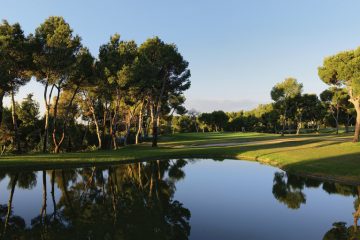The salt lakes of the Costa Blanca: natural reserves and source of the healthy micro climate
The city of Torrevieja owes its existence to its salt lakes. During the 13th century the Spanish king gave permission to harvest the salt. This immediately became the start for structural and economic growth. These salt lakes also characterise the region, so we had to write a blog text about it!
The salt lakes
Both salt lakes (in Spanish: Salinas) are protected nature reserves, but nonetheless they are different. The salt lake of La Mata has a green-blue colour and is surrounded by a large nature park.
The salt lake of Torrevieja has the characteristic pink colour. This pink colour is caused by bacteria, which lives in the salt water. These same bacteria can also be found in the Dead Sea.
An additional consequence of this is that the shrimps that live in the lake also have a rosy colour. The flamingos eat these shrimps and obtain their rose-coloured feathers in this way.
How and why?
The salt lakes are connected to the sea via a channel. This also ensures the supply of salt water.
As soon as the seawater reaches the salt lake, the water begins to evaporate under the Spanish sun. This natural phenomenon is very important for the crystallisation process, resulting in a higher salt level.
When the salt begins to solidify at the bottom, it is ready to be collected.
The salt lakes of La Mata and Torrevieja produce gritting salt for the icy roads of northern Europe during the cold winter months. Production starts around June and lasts until the end of October. Moreover, these salt lakes are the oldest and largest in Europe.

Nature
Many tourists and photographers visit the salt lakes during the breeding season of the flamingos. But not only flamingos stay in these salt lakes. With a bit of luck, you will discover weasels, hedgehogs, lizards, foxes and snakes here too.
In addition, there is also a large variety of plants and flowers that give colour to the nature reserve.
It is possible to take a walk through the nature park of La Mata. Several sand paths run through the site and the walking routes are marked with wooden signs. You can enjoy a picnic surrounded by nature at several picnic tables throughout the nature reserve.





